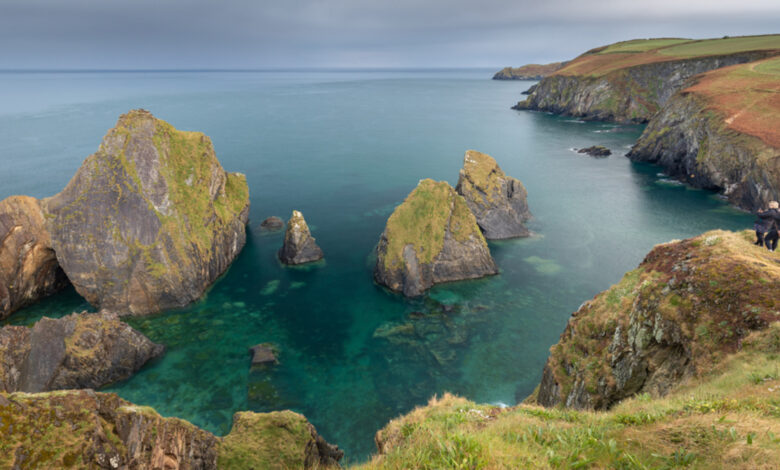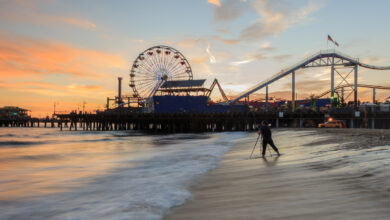5 Essentials for Beginners on Seascape Photography

Oh, the charm of the sea! The crashing waves, the salty air and the breathtaking beauty of the coast. If you are a beginner photographer looking to start your journey of photographing seascapes, you will enjoy. The seascape offers tons of stunning photo opportunities, but getting started can seem a bit daunting. Do not be afraid! In this article, we’ll explore five beginner essentials to kick off your oceanscape photography adventure and capture mesmerizing shots that will take the viewer to the shore.
1. Research and Scouting Sites
The essential first step is to research and find potential seascape locations. From dramatic cliffs to serene beaches, the coastline offers a multitude of possibilities. Find spots with interesting geological features, rock formations, piers, lighthouses, or any other element that can add character to your image. Study tide charts to plan for high tide or low tide shots, as they can dramatically change the look and feel of a scene. Record sunrise and sunset directions to position you for optimal lighting conditions. The more you know about your chosen locations, the better prepared you will be to capture stunning seascapes.

2. Prepare for the challenge
Photographing seascapes comes with its own unique challenges, and having the right equipment is essential. Invest in a sturdy tripod to keep your camera steady in windy conditions and ensure sharp images. A wide-angle lens, such as a 16-35mm or 24-70mm, will allow you to capture the immense beauty of the seascape. Consider using a polarization filter to reduce glare and enhance colors, especially when photographing water or reflections. Finally, don’t forget lens wipes and protective gear to shield your gear from seawater vapor.
3. Mastering the long exposure
Long exposure photography is a great technique for creating captivating seascapes. By using a longer shutter speed, you can capture the movement of the water, creating a dreamy and ethereal effect. To achieve a long exposure, set your camera to manual mode and use a small aperture (higher f-stop number) to limit the amount of light entering the camera. Attach one neutral density (ND) filter to further reduce the amount of light, allowing for a longer exposure without overexposing the image. Experiment with shutter speeds ranging from seconds to minutes and observe how the water transforms into a smooth and serene surface.

4. Embrace dynamic light
Light is an important factor in seascape photography. The interplay of light and shadow can add drama, depth, and dimension to your images. Be prepared to adapt to ever-changing lighting conditions by visiting your chosen location at different times of the day. The soft golden light during sunrise and sunset can add warmth to your seascape and create beautiful silhouettes. Stormy skies and dramatic in cloudy or rainy weather can add a sense of mood and intensity to your images. Don’t shy away from challenging lighting situations; instead, use them as opportunities to capture unique and fascinating seascapes.
5. Capture the essence of motion
The seascape is inherently dynamic, with crashing waves, swirling tides and constant ups and downs of water. To really capture the essence of movement in your images, experiment with different techniques. Use faster shutter speeds to freeze the action and capture the power and energy of the breaking waves. Conversely, a slower shutter speed will allow you to convey the fluidity and movement of the water. Incorporate the long exposure techniques mentioned earlier to create a sense of peace and tranquility in your seascape. Play with different perspectives, angles, and compositions to capture the ever-changing nature of the sea.

Let’s summarize
All in all, starting your oceanscape photography journey is an exciting opportunity to immerse yourself in the beauty of the shores and capture mesmerizing photos. By researching and searching for locations, equipping yourself with the right gear, mastering long exposures, using dynamic lighting, and capturing the essence of motion, you’ll continue to create scenes beautiful sea.
Remember, practice makes perfect. The more you venture out to shore, the more you will learn about the ever-changing nature of the sea and its photographic potential. Don’t be afraid to experiment, try different techniques and develop your own unique style. Every seascape has its own story to tell and whether you capture its essence through the lens or not is up to you.
Finally, don’t forget to enjoy the process. Seascapes that bring a sense of peace and tranquility can be extremely therapeutic. Take time to appreciate the beauty around you, listen to the soothing sound of the waves, and let yourself be inspired by the vastness of the ocean. Your passion for seascapes will shine through in your photos, inviting others to experience the captivating world you’ve captured.
So, gather your gear, research your locations and begin your oceanscape photography journey. Let the waves guide you, the light inspire you and the beauty of the shores fill your frame. With five beginner’s essentials, you’re well-equipped to embark on an adventure that will not only enhance your photography skills, but also deepen your connection with energy. the allure of the sea. Happy photography and hope that your seascape will transport the viewer to the peaceful and enchanting world of the shores.
What are your thoughts on this topic? Let’s continue the conversation below.



